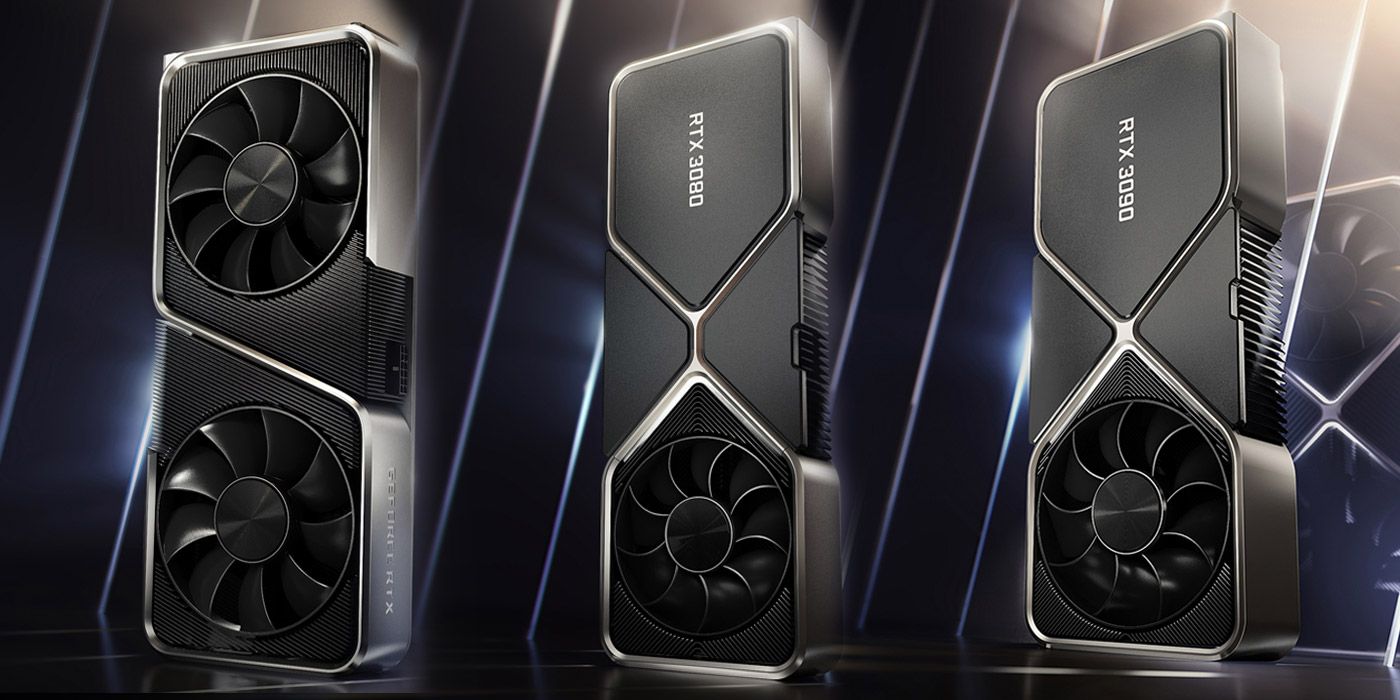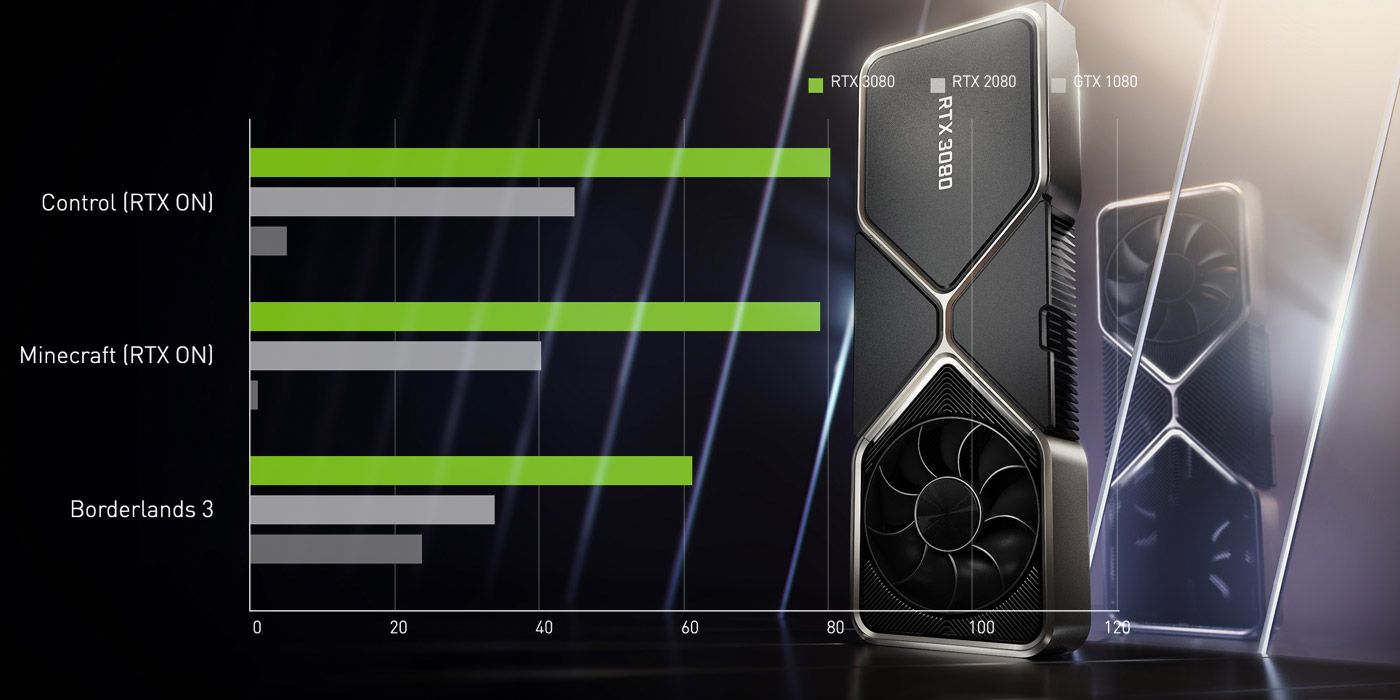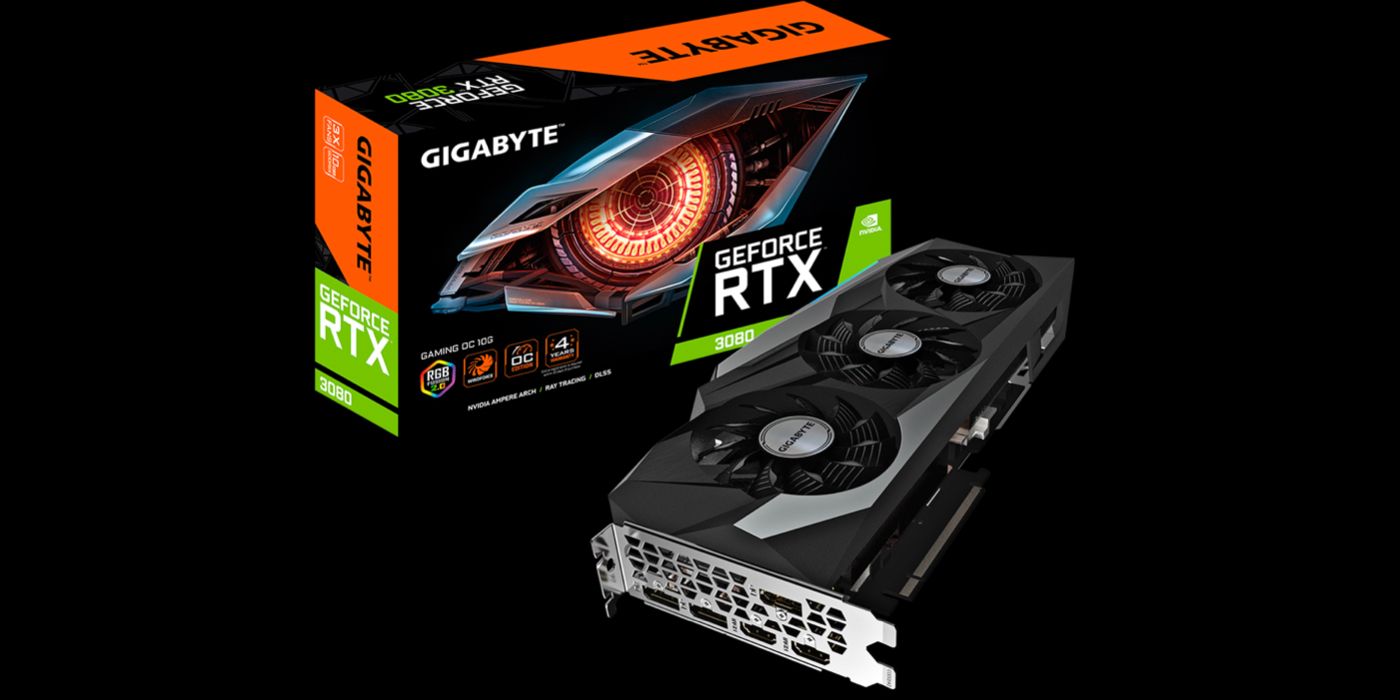Nvidia's new 30-series graphics cards have caused a massive stir in the world of graphics tech and PC gaming, offering a performance leap the likes of which has not been seen for many years. Practical ray tracing, extremely powerful processing for creative workloads, and a competitive price point are each reason enough for hype. Technologies like ray tracing and DLSS promise to push game development forward, while the AI acceleration and data processing made possible by powerful cards like the 3090 will be a boon in many more areas than just 8K gaming.
However, all that well-earned hype has its downsides too. The recent 3080 launch is the best example of what can go wrong when a new product promises so much improvement, as a battle between retailers, scalpers, and consumers has erupted over the botched release. Bots used to buy up dozens of 3080s to re-sell at massive markups on eBay are being countered by bots flooding the listings with fake bids. Very few genuine consumers were able to get their hands on a new 3080, and Nvidia themselves have apologized for how poorly the launch was carried out. For those who feel it's time for an update to their gaming rig, knowing when and how to purchase a new 30-series card presents a challenge.
The Waiting Game
The most important advice for buying a new 30-series card is to bide time and play the waiting game. While some consumers just want to get their hands on the first edition of the 3080 and don't care about the risks, there are many reasons that the average consumer should take a slower approach. Many people purchased new 3080s before independent reviewers had even had a chance to fully test the cards, going only on Nvidia's own claims. Versions by independent manufacturers, competition from AMD, new budget-oriented product skews, supply stabilization, and long-term product reviews will all doubtless change the value proposition of the new cards.
Nvidia's Founder's Edition cards set the standard for pricing and performance of 30-series GPUs, but independent manufacturers like Gigabyte, ASUS, EVGA, and MSI will surely make a wide array of 30-series cards with competitive pricing. Because of the robust, complex cooler designs on Nvidia's own offerings, other manufacturers will likely be able to offer cards with the same basic performance but more standard cooling at slightly lower prices. Even more important than other manufacturers' cards will be Nvidia's own product updates though.
Nvidia is well known for updating cards or putting out new product skews right after many customers have already purchased what they thought would be the best card for their money. The SUPER versions of the 20-series cards stand out as a clear example, but even in this new line of products the 3070 may turn out to be the best value proposition, and there are even rumors of a 3080Ti or 3070Ti coming out in the near future. At the same time, the 3070, 3080, and 3090 are all high-end, overkill cards, and it is almost certain that Nvidia will put out a 3060 and other budget-oriented cards in the $200-$300 range.
The frantic scrambling for a very limited supply of new cards typically slows down within one to two months after the release of a new product, and there is no reason to suspect it will be any different this time around. Soon enough, the supply of 3080s will stabilize, and consumers will be able to purchase them at base price as in-stock items that ship immediately. Even then, waiting a couple more months to get a handle on other products releasing and most importantly, independent performance data, is always a good idea.
Competition, Reviews, and Benchmarks
After independent reviewers got their hands on the 3080, it became clear that the performance numbers Nvidia touted were not entirely accurate. The promised "double performance" of the 2080 was only applicable in certain games, and while still an impressive leap, it was not the same across the board. That is to be expected of a company trying to build up hype for a new product, so it is important to allow enough time for a consensus to form on which card is the best value for the money.
Last generation, the 2070 and later the 2070 SUPER offered the best price-to-performance ratio, so the 3070 may well fit into the same niche. However, no one has yet had a chance to test how much of a difference the GDDR6X memory in the 3080 and 3090 makes compared to the GDDR6 in the 3070. Nvidia claims the 3070 has the same or better performance to the 2080Ti, but Nvidia's performance information must be taken with a grain of salt. This is especially true if the rumors that there may be Ti versions of the new cards with more RAM have any truth to them.
Aside from internal competition with future 3060s or 3080Tis, it is also vital to consider that AMD has yet to throw their hat into the ring with new graphics cards. It may seem impossible now for anyone to catch up with Nvidia's new technology, but AMD has done wonders in recent times with their CPU tech and has a long history of offering very competitive graphics cards in the mid-range arena. Even if AMD can't beat Nvidia's top models, even a little competition can do a lot to drive down prices across the board and benefit consumers.
The best time to go on the market for a new 30-series card will likely be late this year or in the early months of 2021, when cards should be readily available and more information is on hand. The 2080Ti was almost impossible to get when it launched in September of 2018, but by February of 2019 Nvidia had launched multiple budget options and high-end cards like the 2080 were easier to find at standard prices. A wait like that may seem impossible for those who need a new PC right this instant, but there are always major risks associated with jumping on a brand new tech release right away.



